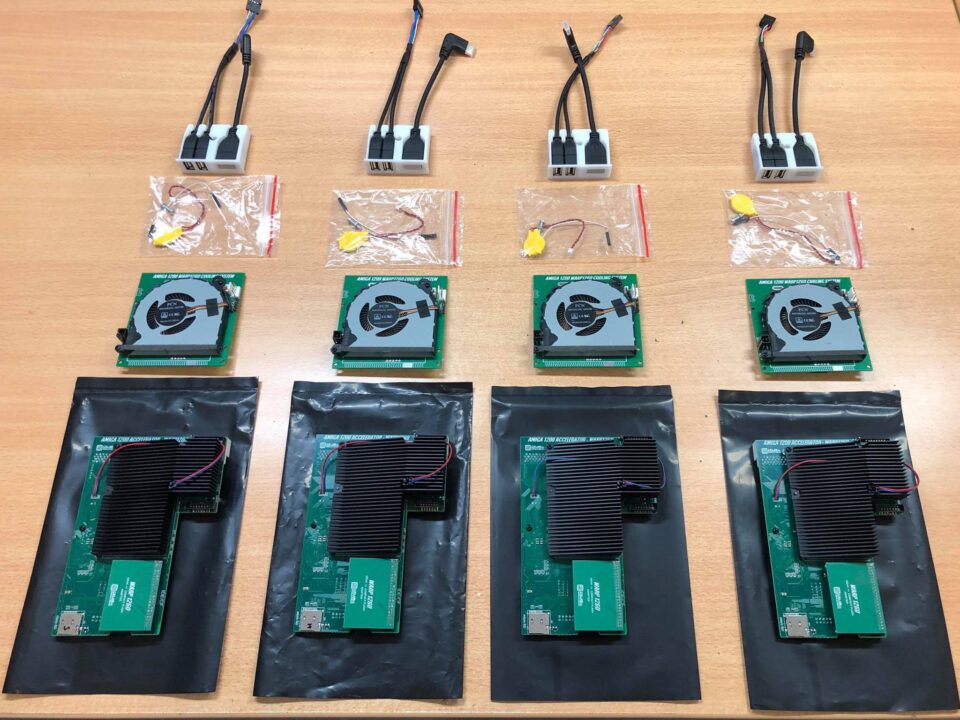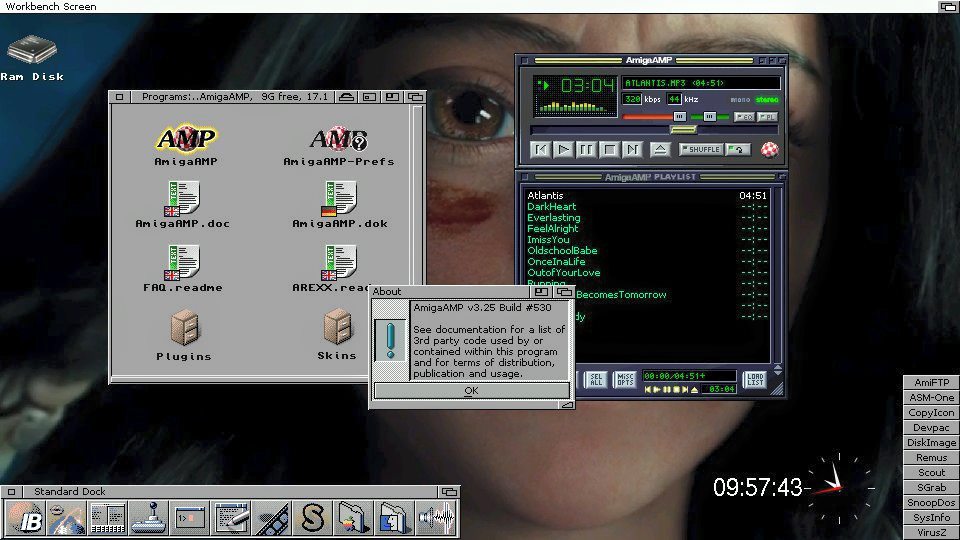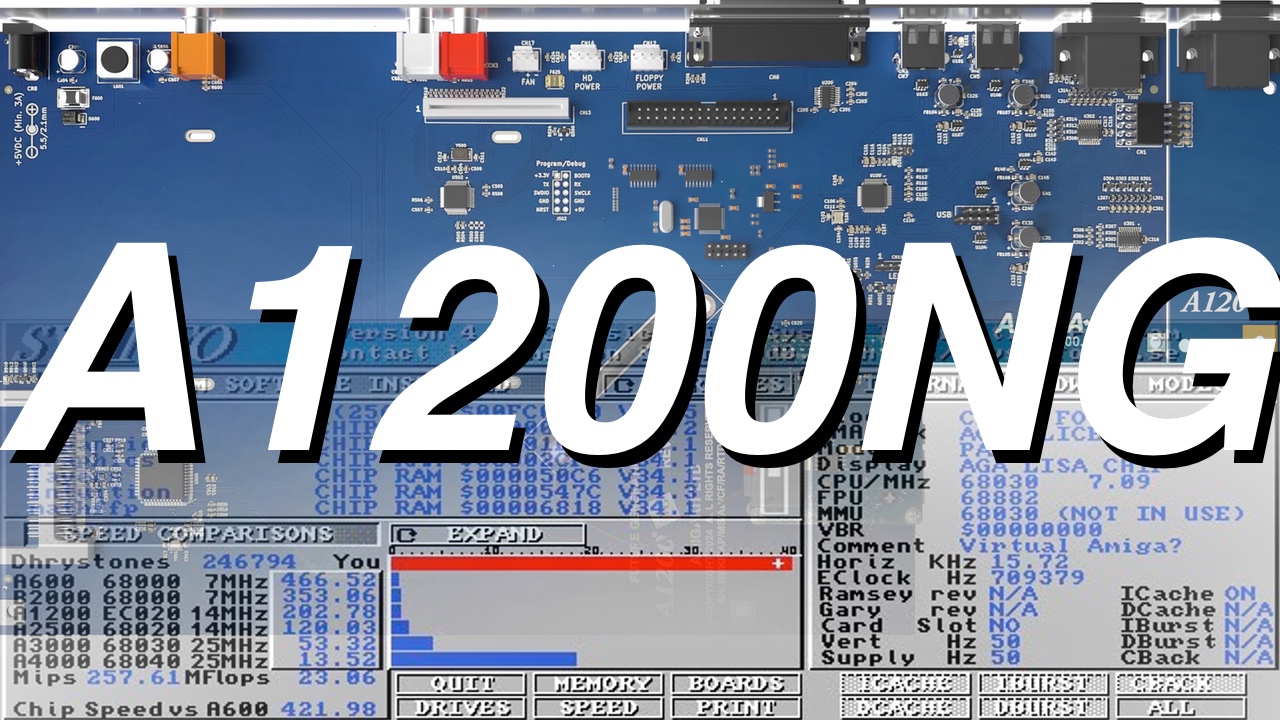When it is time to upgrade any Classic Amiga. You really want to buy a 68060! But this CPU is no more made and those that are on the market are difficult to get hands-on. However, if you’re not too picky you can get one that isn’t too expensive. So, let me guide you!
With new 68060 accelerators coming for the Amiga market. I decided to write this article about the availability of 68060 CPU’s and this is what I found out to share with Amiga users.

John Hertell told Amitopia Amiga Magazine that the development of 68060 CPU’s stopped in 2012. Freescale was the company that did them. Since then the availability of these CPUs has reduced a lot. Not only that but also people trying to cheat by selling fake 68060 CPUs’s so I decided to put up an important list to know when purchasing these awesome CPUs.
Amitopia Amiga Magazine recommends everyone that wants to buy a 68060 CPU to have a PayPal account as an extra guarantee here.
Things To Know Before Buying Your 68060 CPU
- 68060 CPU should always have RC letters on them
- 68060 71E41J Rev 6 is the best version of CPU
- 68060 LC or EC CPU’s doesn’t have FPU or MMU. However, an MMU Library can be used!
- 68060 isn’t produced since 2012 by Freescale so be aware of this!
- Always use PayPal for payment so you can get refunds if the 68060 CPU doesn’t work
All of the new 68060 accelerators for Amiga today are based on the 68060 used marked. The only way to test 68060’s is to put them into Amiga and let apps such as WhichAmiga tell you what it is. However, even if it is a Rev6 CPU you can’t expect to get the fastest 68060 CPU. This is because there is no labeling regarding this.
Amitopia Amiga Magazine talked with John Hertell which is the 68060 expert in the Amiga community. He is helping both of the Warp team and the TerribleFire guy revealed the info about Rev6’s 68060 CPU’s. You’re never guaranteed to get a CPU that can be clocked at speeds at 100MHz or beyond. My 68060 CPU that I have on my Warp1260 card is a Rev6 one and if I try to overclock it to 105MHz it is the 68060 CPU that is the reason for failures that I get. I had my card checked for this.
John Hertel also recommends people to buy the LC version of the 68060 as they are much cheaper. It really depends on what you want to do with your Classic Amiga when upgrading it with a 68060 CPU. Remember that the Vampire V2+ FPGA 68080 accelerators don’t have a proper FPU implementation and it works. With an LC version of 68060 then you need to install mmu.library to be used together with MuLib 68060 Experimental library.
if you are using a 68LC060 in your Amiga it WILL work but you will have issues: most programs compiled for 040 and better defaults to having an FPU. so if the coder has used a float or double, programs WILL crash.solution? use binaries made for 68030 without FPU. Then it will work and quite fast. the 68LC060 can be clocked as high as a rev6 cpu.. you will not be able to run demos and most games. but utilities etc will work.
Either you get the most expensive 68060 Rev6 or a 68060LC CPU. Your Amiga will be much faster than it was.

Be aware for lack of features in 68LC060 and 68EC060
The pricing for Warp 1260 is 500 Euros + a 68060 CPU that works. So be aware when looking for it on eBay. The Warp 68060 accelerators can take 68060’s up to 105MHz in speed. You can go for LC or EC models as they lack MMU and FPU. They are much cheaper to get. Some can be bought as low as 70 Euros! They are perfect you don’t need those features when using AmigaOS.
| CPU | MHz | FPU | MMU |
|---|---|---|---|
| 68060 | 50 to 133 | YES | YES |
| 68060LC | 50 to 133 | NO | YES |
| 68060EC | 50 to 133 | NO | NO |
The LC version is titled 68LC060 (Low-Cost) version is without an FPU (Float Point Unit) and EC version is titled 68EC060 (Embedded Controller) that lacks both of the MMU (Memory Management Unit) and FPU.
Once you know this when buying 68060. You will have a better experience and that’s my goal with this guide.
Files Recommended for 68060LC Users
All of these files are found on Aminet. Make sure to Download them correctly. Unpack them with LHA unpacker
68060 against Pentium
The 68060 shares most architectural features with the P5 Pentium. Both have a very similar superscalar in-order dual instruction pipeline configuration, and an instruction decoder which breaks down complex instructions into simpler ones before execution. However, a significant difference is that the 68060 FPU is not pipelined and is therefore up to three times slower than the Pentium in floating-point applications. In contrast to that, integer multiplications and bit shifting instructions are significantly faster on the 68060. The 68060 has the ability to execute simple instructions in the address generation unit (AGU) and thereby supply the result two cycles before the ALU.
Against the Pentium, the 68060 can perform better on mixed code; Pentium’s decoder cannot issue an FP instruction every opportunity and hence the FPU is not superscalar as the ALUs were. If the 68060’s non-pipelined FPU can accept an instruction, it can be issued one by the decoder. This means that optimizing for the 68060 is easier: no rules prevent FP instructions from being issued whenever was convenient for the programmer other than well-understood instruction latencies.
So, 68060 is a healthy competitor to Pentium. The Warp accelerators can accept 68060 with speeds up to 105MHz which is pretty fast. Together with AmigaOS which is fast, the user will feel the usage to be a really good upgrade.

AmigaOS Looks Awesome on RTG
I remember when I had my Amiga 4000 with 68060 and Picasso IV graphics card. I really loved the AmigaOS use than Windows 95, Windows 98, or even Windows ME between 1998 and 2000. Windows 2000 was the very first useable Windows version, but even then AmigaOS 3.x outperformed it in speeds.
Also, the way you can customize the OS makes AmigaOS feel so much more yours now in an age where both Microsoft and Apple want to control you more and more.
When more and more people are getting the remarkable AmigaOS RTG experience through the awesome Vampire 68080 FPGA accelerators and Warp 68060 accelerators. People will really start to see how much more awesome AmigaOS 3.x was than Windows 95, Windows 98, and Windows ME or even MacOS for 68k. AmigaOS in higher screen modes with millions of colors looks really nice and is still today my very reason for loving AmigaOS way more than Windows 10 or macOS Catalina.
AmigaOS in higher screen modes can be experienced by using AmigaOS 3.x, AmigaOS 4.x, MorphOS 3.x, and AROS. AmigaOS running on OCS, ECS, and AGA is awesome, but AmigaOS in higher screen modes is something way more people should experience.
The availability of faster 68060 and 68080 FPGA for Classic Amiga takes our platform to a new level which Amitopia Amiga Magazine will follow up.





